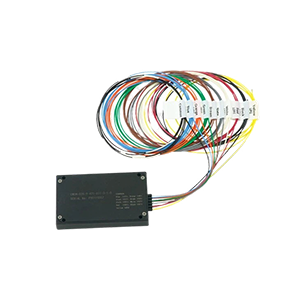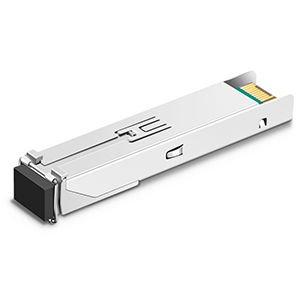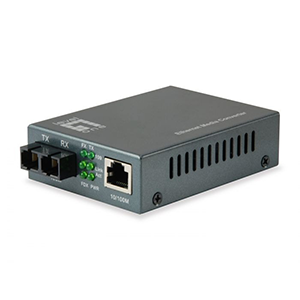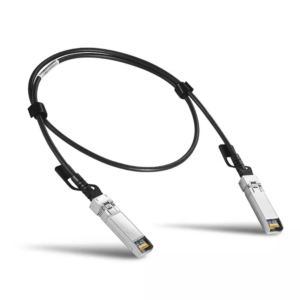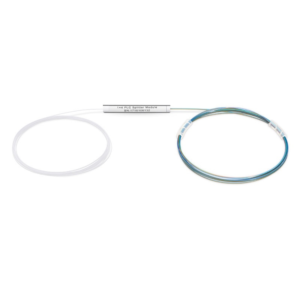Welcome to this blog! In this article, I will discuss with you some of the shortcomings of Wavelength Division Multiplexing (WDM) technology compared to other technologies. Although WDM technology is widely used in many fields, we also need to understand some of the challenges and limitations it faces.
Wavelength Division Multiplexing (WDM) technology is a key technology for multiplexing in optical fiber communications, which allows the simultaneous transmission of multiple independent optical signals at different wavelengths. WDM technology is widely used and has become a core component of modern high-speed optical fiber communication systems. However, just like any other technology, WDM technology also has some shortcomings, which need to be considered and solved in practical applications.
WDM Cost and Complexity
WDM technology has some shortcomings in terms of cost and complexity, mainly related to system deployment, maintenance and engineering design. Below is a discussion of these shortcomings:
a. High deployment costs: Deploying WDM systems requires a large number of equipment and components, such as optical fibers, optical demultiplexers, optical multiplexers, optical amplifiers, wavelength selectors, etc. These devices all have high costs, especially the equipment required for high-speed and high-capacity WDM systems. Therefore, the deployment cost of WDM systems is high, which may be a challenge for some organizations and applications with limited budgets.
b. Complex engineering design: The engineering design of WDM systems needs to consider many aspects, such as wavelength selection, fiber cabling, optical demultiplexing and optical multiplexer configuration, etc. These design decisions require consideration of multiple parameters and factors, including signal power, wavelength spacing, crosstalk, fiber loss, and more. Therefore, the engineering design phase requires experienced engineers and professionals to carry out system planning and optimization to ensure system performance and reliability.
c. Complex management and maintenance: The management and maintenance of WDM systems is also a complex task. Since the WDM system involves multiple wavelength channels and optical signals, the performance and quality of each channel need to be monitored and controlled in real time. This requires the use of professional monitoring equipment and software to monitor optical power, wavelength stability, crosstalk and other indicators, and to take timely measures for fault diagnosis and repair. In addition, for large-scale WDM networks, complex optical fiber cabling and pipeline management are also required to ensure the normal operation of signal transmission and routing.
d. Personnel training and technical support: Due to the complexity of WDM technology, deploying and maintaining WDM systems requires engineers and technicians with corresponding technical knowledge and skills. This means that organizations need to invest certain resources in training and supporting personnel to ensure that they can effectively operate and manage WDM systems. Additionally, if a malfunction or problem occurs, it may require working with the equipment vendor for technical support and troubleshooting, which may also add additional cost and complexity.
However, despite these challenges, the high capacity, high efficiency and multiplexing characteristics of WDM technology make it an indispensable key technology in modern optical fiber communication systems. With the development of technology and the accumulation of experience, these shortcomings are also expected to be alleviated and solved, making the WDM system more mature and reliable.
Limitations of WDM flexibility and scalability
WDM technology has some limitations in terms of flexibility and scalability, mainly related to the limited wavelength resources and the challenges faced when adding or reducing wavelengths. The following is an explanation and discussion of these limitations:
-
Limited wavelength resources: Each wavelength channel in the WDM system represents an independent optical signal path. However, the wavelength resources available in optical fiber are limited, usually ranging from tens to hundreds of wavelengths. This means that WDM systems are limited by wavelength resources when supporting more optical signals. When demand exceeds available wavelengths, additional measures are required to increase wavelength resources, such as using dense wavelength division multiplexing (DWDM) technology or higher levels of distributed multiplexing of optical fibers.
-
Challenges of adding or subtracting wavelengths: Adding or subtracting wavelength channels in a WDM system is a challenging task. When a wavelength needs to be added, it is necessary to ensure that there are sufficient wavelength resources and corresponding optical devices to support the new channel. This may require system reconfiguration and fiber optic cabling to ensure that the new channels minimize interference with existing channels.
On the contrary, when wavelength channels need to be reduced, attention needs to be paid to the reuse and reconfiguration of optical fiber resources. Closing or removing wavelength channels may result in a waste of optical fiber resources because wavelength resources in optical fibers are limited. Additionally, closing or reducing wavelength channels may have an impact on system performance and stability, as nonlinear effects and crosstalk in the fiber may change.
- Flexibility and scalability challenges: Due to the limited wavelength resources and the challenge of adding/reducing wavelengths, the flexibility and scalability of WDM systems are subject to certain limitations. In traditional WDM systems, wavelength configuration and management are relatively static and require detailed planning and engineering design. This limits the system’s flexibility in terms of demand changes or dynamic traffic management.
However, as technology advances, some solutions for flexibility and scalability have emerged. For example, Reconfigurable Optical Add-Drop Multiplexer (ROADM) technology can provide dynamic configuration and management of wavelength channels, making the system more flexible and scalable. In addition, technologies such as Software-Defined Networking (SDN) and Network Function Virtualization (NFV) can also provide flexible control and management of WDM networks to meet changing needs.
WDM modulation and demodulation complexity
Modulation and demodulation in WDM technology are complex issues faced in practical applications. The following is an explanation of the realities of these issues and the challenges of high-speed modem technology and the requirements for equipment and technology:
-
Modulation complexity: In WDM systems, modulation is the process of converting electronic signals into optical signals. This involves embedding information into light waves for transmission in optical fibers. Modulation techniques require highly precise electronic and optical control to ensure correct modulation and transmission of data on different wavelength channels. This requires modulators with high speed, high accuracy and stability that can maintain consistent performance under various transmission conditions.
-
Demodulation complexity: In WDM systems, demodulation is the process of converting optical signals into electronic signals. The demodulator needs to separate the optical signals of multiple wavelength channels and perform appropriate photoelectric conversion to restore the original electronic signal. Demodulation techniques require highly precise optical and electronic components to ensure that interference between wavelength channels is minimized and that the data from each channel is accurately demodulated. High-speed demodulators require high sensitivity, low noise, and high-speed processing capabilities.
Challenges of high-speed modulation and demodulation technology: High-speed modulation and demodulation technology faces some challenges. These include:
-
High-speed performance: As communication needs increase, there is a need to support higher data rates and greater bandwidth. Therefore, high-speed modems need to be able to handle optical signals at rates in excess of 10 Gbps and beyond. This places higher demands on the performance and response speed of the modem’s electronic and optical components.
-
High accuracy and stability: High-speed modems require high accuracy and stability to ensure consistent performance under different operating conditions and environments. Factors such as temperature changes, fiber losses, and fiber nonlinearities can all affect modem performance, requiring precise design and control.
-
Compatibility and interoperability: WDM systems often consist of equipment and components from multiple vendors. Therefore, high-speed modem technology needs to be compatible and interoperable to ensure seamless integration and operation with equipment from different vendors.
-
Cost-effectiveness: High-speed modem technology is more expensive to develop and manufacture, especially for higher-speed devices. Therefore, delivering high-speed modem technology requires balancing performance, cost and scalability to meet market demands.
-
Difficulties in WDM fault isolation and maintenance
WDM technology faces some difficulties in fault isolation and maintenance. This mainly involves the characteristics of multiple signals sharing the same optical fiber, making fault location and repair more complicated. The following is a discussion and explanation of these issues:
-
Multiple signals share the same optical fiber: WDM technology allows multiple signals to be transmitted by sharing the same optical fiber. Each signal is distinguished using different wavelengths to achieve multiplexing of optical signals. However, when a fault occurs, locating and repairing the fault becomes complicated because multiple signals share the same optical fiber. A fault can cause signal interruption or degradation in one or more wavelength channels, but depending on the specific location and nature of the fault, pinpointing the exact location of the fault can be difficult.
-
Challenges in fault location: Since multiple signals share the same fiber and these signals are transmitted at different wavelengths in the fiber, when a fault occurs, accurately locating the location of the fault becomes complicated. Failures may be caused by a variety of reasons, such as fiber breakage, optical device failure, or fiber nonlinear effects. Determining the specific wavelength channel and fiber segment where the fault resides requires detailed fault isolation and testing. This may require the use of specialized fiber optic testing equipment and techniques such as optical time domain reflectometry (OTDR) to help determine the location of the fault.
-
Complexity of maintenance: After the fault location is completed, the maintenance work also becomes complicated. Since the fault may involve multiple wavelength channels and fiber segments, repair work needs to be carried out while ensuring that other normal channels are not affected. This may require appropriate measures, such as fiber cutting, optical component replacement or reconfiguration, to repair the fault and restore normal communications.
-
Maintenance challenges: The maintenance of WDM systems also faces some challenges. Since WDM systems usually consist of multiple wavelength channels and optical fibers, maintenance tasks need to involve monitoring and management of the entire system. This may require the implementation of effective monitoring and diagnostic mechanisms, as well as regular inspection and maintenance activities to ensure proper system operation and performance.
To deal with these difficulties, some solutions have emerged. For example, fiber optic testing equipment such as OTDR can help with fault isolation and location. In addition, by designing reasonable system architecture and redundancy mechanisms, such as backup optical fiber links and optical devices, the reliability and fault tolerance of the system can be improved and the impact of faults on communications can be reduced.
WDM compatibility and standardization challenges
WDM technology faces some challenges in terms of compatibility and standardization. The following is a discussion of these issues:
-
Compatibility issues: WDM systems are usually composed of equipment and components provided by multiple manufacturers. These devices and components may use different technical specifications, interfaces and protocols, leading to compatibility issues between different manufacturers. When equipment from different manufacturers needs to be integrated into the same WDM system, compatibility conflicts and interoperability issues may occur, affecting the performance and functionality of the system.
-
The impact of lack of standardization on system integration and interoperability: The lack of unified standards has a negative impact on system integration and interoperability of WDM technology. In the absence of unified standards, different manufacturers may adopt their own proprietary technologies and interfaces, limiting interoperability between devices. This can lead to system integration difficulties, functional limitations, and increased dependence on specific vendor equipment.
-
Management and configuration complexity: Management and configuration of WDM systems has become more complex due to the lack of unified standards and compatibility. Devices from different manufacturers may have different management interfaces and configuration options, requiring additional effort to understand and operate these different systems. This increases the complexity of system management and can lead to configuration errors, difficulty in fault isolation, and increased maintenance costs and time.
-
Restraining innovation and technological progress: The lack of a unified standardization framework may limit the development of innovation and technological progress. Different manufacturers may develop unique technologies and solutions that cannot be seamlessly integrated with other manufacturers’ equipment. This may result in limited market competition and limit the introduction and application of new technologies.
To address these challenges, driving compatibility and standardization is critical. Here are some solutions and measures:
-
Develop unified technical standards: Developing unified technical standards is the key to solving compatibility and interoperability issues. By formulating unified interface standards, protocols and specifications, we can ensure that equipment from different manufacturers can be seamlessly integrated and achieve interoperability.
-
Promote industrial cooperation and negotiation: Cooperation and negotiation between different manufacturers are the key to promoting compatibility and standardization. Industrial organizations, standardization agencies and manufacturers can work together to formulate common technical standards and specifications, solve compatibility issues, and promote the development and application of WDM technology.
-
Emphasis on openness and interoperability: Manufacturers should pay attention to openness and interoperability, and consider compatibility with other manufacturers’ equipment when designing and developing devices and components. Using open interfaces and protocols and following common technical standards can help reduce the complexity of system integration and improve interoperability.
-
Promote industry certification and testing: Industry certification and testing can ensure that equipment and components meet unified technical standards and requirements. By driving industry certification and testing, you can improve device compatibility and provide users with reliable choices.
-
Maintain and upgrade existing systems: For already deployed WDM systems, maintenance and upgrades are also important. Through regular software updates and firmware upgrades, system compatibility and interoperability can be improved, and system performance and functionality can be enhanced.
In short, compatibility and standardization are key factors promoting the development of WDM technology. By formulating unified technical standards, promoting industrial cooperation and consultation, emphasizing openness and interoperability, and promoting industry certification and testing, compatibility and standardization challenges can be overcome and the widespread application and further innovation of WDM technology can be promoted.
WDM future development and solutions
WDM technology is expected to overcome its shortcomings and further improve its performance and functionality in future development. Here are some possible future developments and solutions:
-
High capacity and flexibility: Future WDM systems will pay more attention to high capacity and flexibility. As communication needs continue to grow, WDM systems need to support higher data rates and transmission capacities. The development of new optical fiber materials and device technologies will promote the capacity increase of WDM systems. At the same time, the introduction of technologies such as flexible wavelength resource management and dynamic wavelength routing can realize flexible allocation and optimization of wavelength resources and improve system flexibility and resource utilization.
-
Elastic Optical Networking: Elastic optical network is an emerging optical network architecture designed to solve the limitations of fixed wavelength and bandwidth resource allocation in traditional WDM networks. Elastic optical networks allow wavelength and bandwidth resources to be dynamically adjusted according to actual needs to adapt to different transmission needs. This flexibility and adjustability allows the network to better respond to changing traffic patterns and business needs. The development of elastic optical networks is expected to overcome the problems of low resource utilization, wavelength collision and fragmentation in traditional WDM networks.
-
Software-Defined Optical Networking: Software-Defined Optical Networking is an emerging technology that applies the concept of Software-Defined Networking (SDN) to the field of optical networks. By separating network control and management functions from traditional distributed devices and concentrating them in software controllers, software-defined optical networks enable flexible programming and dynamic management of optical networks. This makes network configuration, optimization, fault recovery and other tasks more automated and intelligent, improving network adaptability and performance.
-
Compatibility and standardization: In future development, more efforts will be put into promoting compatibility and standardization. Developing unified technical standards and interface specifications and strengthening inter-industry cooperation and consultation will help reduce compatibility issues between different manufacturers and enhance the interoperability of equipment and systems.
-
New materials and device technologies: The development of new optical fiber materials and device technologies will also promote the progress of WDM technology. For example, new optical fiber materials can provide lower transmission loss and higher nonlinear threshold, increasing the capacity and distance of optical fiber transmission. At the same time, the development of new optical device technologies such as optical amplifiers, optical switches and optical modulators is expected to provide higher performance and better reliability.
Summary:
We dive into some of the shortcomings of Wavelength Division Multiplexing (WDM) technology compared to other technologies. We understand that WDM technology has some shortcomings in terms of cost and complexity. Deploying and maintaining WDM systems requires high costs and requires complex engineering design and management requirements.
In addition, WDM technology also has some limitations in terms of flexibility and scalability, including limited wavelength resources and challenges when adding or reducing wavelengths. Modulation and demodulation complexity is also one of the practical problems of WDM technology. High-speed modulation and demodulation technology places higher requirements on equipment and technology.
WDM FAQ
1.Complexity and cost: WDM systems require more complex and sophisticated equipment compared to traditional multiplexing techniques. This can result in higher initial setup costs and increased operational expenses, including the need for specialized components and optical transceivers capable of transmitting and receiving multiple wavelengths.
2.Limited interoperability: WDM systems from different vendors may have limited interoperability due to variations in wavelength assignments, channel spacing, or transmission protocols. This can restrict flexibility in network design and upgrades, potentially leading to vendor lock-in.
3.Increased vulnerability: WDM systems are susceptible to certain vulnerabilities. For instance, a single fiber carrying multiple wavelengths is more vulnerable to a complete loss of signal if the fiber is damaged or severed. Additionally, a failure in one wavelength can affect multiple data streams, leading to a potential loss of all multiplexed signals.
4.Complexity in troubleshooting: Troubleshooting WDM systems can be more complex than traditional multiplexing techniques. The involvement of multiple wavelengths requires specialized testing equipment and expertise to identify and resolve issues, which can result in increased troubleshooting time and costs.
5.Limited flexibility for legacy systems: Upgrading legacy systems to WDM may require significant infrastructure changes and investments. This limitation can be a disadvantage when considering the compatibility and integration of older equipment that may not support WDM technology.
1.Monitoring and maintenance: WDM systems require continuous monitoring to ensure proper functioning of multiple wavelengths and to detect any issues or performance degradation. Regular maintenance and periodic calibration of equipment are necessary to maintain optimal system performance.
2.Capacity planning: Managing the capacity of a WDM system can be challenging, as the number of wavelengths and their data rates need to be carefully planned to accommodate current and future network demands. Accurate capacity planning is crucial to prevent bottlenecks and ensure efficient utilization of network resources.
3.Upgrades and expansions: Upgrading or expanding a WDM system can be complex, especially when integrating new equipment or adding additional wavelengths. Careful planning, coordination, and compatibility testing are necessary to ensure smooth upgrades and expansions without disrupting existing services.
4.Network security: Protecting WDM systems from potential security threats is essential. As WDM systems carry multiple data streams over a single fiber, a breach in security can potentially compromise multiple transmissions. Implementing appropriate security measures, such as encryption and access control, is vital to safeguard the network.
Signal degradation can impact the performance of WDM systems in several ways:
1.Attenuation: Over long distances, optical signals in WDM systems may experience attenuation, leading to a decrease in signal strength. This can result in reduced signal quality and the need for signal amplification or regeneration.
2.Dispersion: Different wavelengths in WDM systems can exhibit different levels of dispersion, where the signal spreads and distorts over distance. This can affect the quality and integrity of the transmitted data, necessitating dispersion compensation techniques.
3.Crosstalk: Crosstalk refers to interference between adjacent wavelengths in a WDM system. It can occur due to imperfections in the multiplexing or demultiplexing process, resulting in signal degradation and reduced signal-to-noise ratio.
4.Nonlinear effects: Nonlinear effects in optical fibers, such as four-wave mixing and self-phase modulation, can occur in WDM systems. These effects can cause signal distortion and degradation, impacting the overall system performance.
While WDM systems are highly scalable, they do have certain limitations:
1.Channel spacing: The channel spacing, or the separation between wavelengths, determines the number of wavelengths that can be multiplexed. Narrower channel spacing allows for more wavelengths but may introduce challenges in maintaining signal quality and managing crosstalk.
2.Available wavelengths: The availability of different wavelengths is limited by the capabilities of optical transceivers and the transmission medium. Some wavelengths may be occupied by other systems or have restrictions due to regulatory considerations, which can impact the scalability of WDM systems.
3.Equipment constraints: The scalability of WDM systems can be influenced by the capacity and capabilities of the associated equipment, such as multiplexers, demultiplexers, and amplifiers. Upgrading or replacing equipment may be necessary to accommodate higher scalability requirements.
Yes, WDM systems are capable of handling different types of data formats, including voice, video, and data. The multiplexing and demultiplexing processes in WDM allow for simultaneous transmission of multiple data streams over a single fiber, regardless of the data format. This flexibility makes WDM systems suitable for various applications, such as telecommunications, multimedia streaming, and data transmission in diverse industries.

